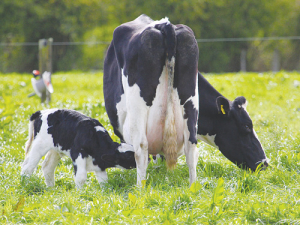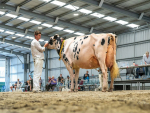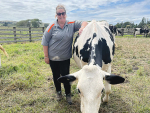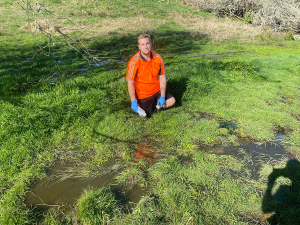Better breeding is shown to be raising the fertility level of Holstein Friesians, say the breeders.
Twenty-five years ago, fertility in black and white herds was declining, says Holstein Friesian NZ. But selective breeding by farmers and scientists has caused the breed’s fertility averages to steadily gain ground relative to other breeds.
The genetic trend of fertility is improving at a 1% better in-calf rate per decade across all breeds, and Holstein Friesian has the steepest rate of improvement, the group says.
Over the three most recent dairy season reports, Holstein Friesian calving intervals are now within 0.2 of a day of the overall dairy cow average, says Bill Montgomerie, former New Zealand national genetic evaluations system manager.
“Short calving intervals indicate high fertility, and Holstein Friesian’s average is 368.7 days over the three most recent dairy season reports, up against the overall dairy cow average of 368.5 days,” he says.
“The average calving interval of NZ Holstein Friesian cows is virtually the same as the average of all NZ dairy cows.
“As well, the average fertility BV for the 2012-born Holstein Friesian cows was +1.1% for calving in the first 42 days of the calving period, while for all the other cows it was +1.6% (referenced against the 2000 genetic base).
“This equals one less cow calving per 200 cows in the first 42 days of the calving period – a very small loss.”
The belief that Holstein Friesians have a female fertility problem is simply not true, says Cherilyn Watson, general manager of Holstein Friesian NZ and World Holstein Friesian Federation council member.
“In the 1990s, the daughters of imported Holstein Friesian sires had poorer fertility than those of local Holstein Friesian sires, but this problem has been addressed,” she says.
“Two things have happened since then.
“Firstly, the poor fertility cows did not breed on, and by the early 2000s effective genetic information on fertility became available, allowing breeders and breeding companies to use sires with satisfactory daughter fertility.
“One need only look at the statistics to realise the reproductive performance of Holstein Friesians will surpass the average of all other cows in the very near future.”


















